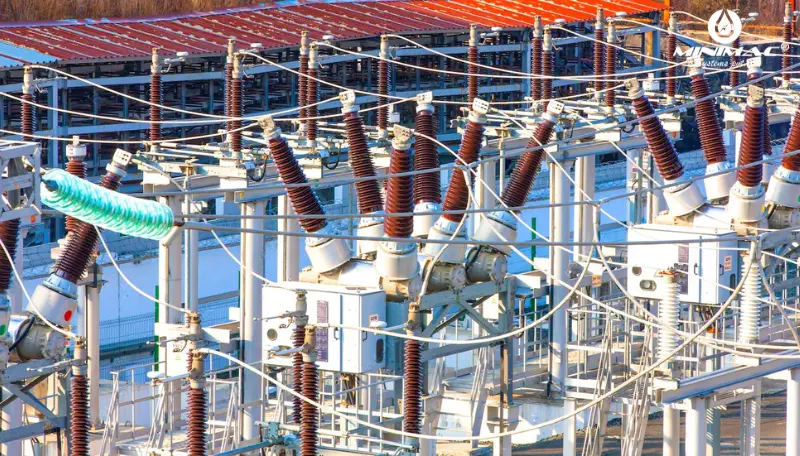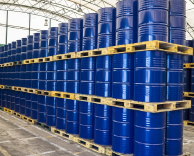Why Transformer Dry-Out Systems Are the Future of Power Maintenance?
Introduction
Transformer maintenance has gained importance as the world needs a reliable power infrastructure more than ever. As the backbone of power transmission and distribution systems, transformers are subjected to various challenges, including moisture contamination. Here, Transformer Dry-Out Systems have come as a boon to guarantee long-term performance, low maintenance and consistent power supply. In this article, we explore in great detail the reasons that transformer dry-out systems are essential for the future of power maintenance.

The Challenges of Moisture in Transformers
Moisture is one of the largest enemies of transformer health. It reduces the dielectric strength of transformer oil and solid insulation and causes many problems, such as:
- Reduced Dielectric Strength: High moisture content reduces the dielectric strength of the transformer oil and insulation material.
- Accelerated Aging: Moisture accelerates the degradation of cellulose, resulting in shorter transformer life.
- Higher Risk of Failures: The Presence of moisture results in overheating, arcing, and even failure of transformers.
Most existing moisture management solutions rely on oil replacement or reactive maintenance, both of which are costly and time-consuming. With that, we come to the Transformer Dry-Out Systems, which is a perfect game changer.
What are Transformer Dry Out Systems
Innovative Transformer Dry-Out Systems are equipment that evacuates moisture from transformer oil and solid insulation without a trip requirement. They employ cutting-edge technology such as vacuum dehydration, molecular sieve filtration, or thermodynamic processes to remove water from the system quickly and effectively. Dry-out systems are different compared to other traditional methods, as they make it a less consuming, in-service solution, allowing control of moisture in real time.
Benefits of Transformer Dry-Out Systems
The oil testing includes different types of analysis to assess the state and characteristics of insulating oil in transformers. These tests can be grouped into the following broad categories:
- Enhanced Transformer Reliability: Lower moisture content increases the dielectric strength of the transformer oil, which provides stable operation of the transformer under fluctuating loads. Image source: Dry-out systems greatly reduce the chances of dielectric breakdown, leading to increased reliability of the entire system.
- Extended Transformer Life: Transformer dry-out systems remove moisture from solid insulation, which, the aging of cellulose insulation . This optimizes the return on investment by increasing the life of transformers.
- Savings on maintenance costs: Transformer failure will cost you a lot of money as it demands that you repair or replace the overall system. In order to prevent this sort of failure from happening, dry-out systems ensure proper levels of moisture, requiring less reactive maintenance and expensive downtime.
- Real Time Monitoring and Control: Several new-age dry-out systems come with sensors and IoT-enabled technologies that enable real-time data on moisture levels, temperature, and oil quality. It enables predictive maintenance strategies as well as decision-making.
- Environmental Sustainability: Waste is produced in the replacement of transformer oil, which consumes extra resources to manufacture. In a way, the dry-out systems minimize oil replacements, helping make maintenance more sustainable.
Key Technologies in Transformer Dry-Out Systems
1 . Vacuum Dehydration
Using vacuum dehydration is a well-known process to extract dissolved and free water from the transformer oil. The vacuum evaporates water from the oil in an efficient manner under low-temperature conditions, which preserves oil chemistry.
2. Molecular Sieve Filtration
Molecular sieves are unique adsorbents with a microporous structure that adsorb moisture from the transformer oil. This is very beneficial in keeping the oil clean from contamination and, in the long run, prevents any sort of contamination from happening.
3. Thermodynamic Separation
This sophisticated technology utilizes temperature and pressure differences to isolate water from oil. This kind of separation is most effective in high-capacity transformers and depending on thermodynamic parameters.
Click Here for Related Videos - https://www.youtube.com/@minimacsystems
Application of Transformer Dry-Out Systems
1. Power Generation Plants
Transformers in power generation facilities operate under heavy loads and play an important role in the uninterruptible power supply. To keep these transformers free of moisture and minimize outages, they use dry-out systems.
2. Industrial Power Distribution
Transformers are the lifeline to power any industry. By eliminating the risk of transformer failure, dry-out systems allow industries to follow an uninterrupted production schedule.
3. Renewable Energy Systems
Transformers are essential for the effective transmission of power on renewable energy projects, including solar and wind farms. Dry-out systems for transformers amplify the dependability and performance of these arrangements.
4. Utility Networks
Within utility networks with multi-scale transformers that might be 100s of kilometers apart, dry-out systems are scalable and make an efficient solution for moisture management.
Transformer dry-out solutions from Minimac Systems
At Minimac Systems, we pride ourselves on delivering innovative products that transform the way you keep your transformer in top condition. Our Transformer Dry-Out Systems are equipped with state-of-the-art technology to provide versatile and reliable moisture elimination with no shutdown required.
Key Features of Minimac Transformer Dry Out Systems
- High-Efficient drying: Based on the two technologies- Vacuum Drying function and Thermo-mechanical Separation systems, can realize high-efficient water removal from oil.
- Compact Design: Minimac dry-out systems are mobile and can be easily transported between locations, including use at remote sites.
- Real-Time Monitoring: Built-in sensors and IoT capability give actionable information for predictive maintenance approaches.
- Ease of Use Interface: We build our software to be intuitive to the operator and easy to manage for on-site personnel with minimal training.
- Sustainability: Our systems are environmentally friendly by promoting oil longevity with minimal waste offered in accordance with universal sustainability objectives.
Why Choose Minimac Systems?
- Proven Expertise: Minimac Systems has experience in creating a maintenance program for your transformer.
- Custom Solution: Each client's needs are different, so we customise our system to suit, ensuring the best results.
- Reliable Support: We have got you covered from installation to regular maintenance, providing you with full support to keep your plant running.
Comprehensive Maintenance and Support Services
That's why installing Transformer Dry-Out Systems is just the first step of proper transformer care. Maintenance and support services become key for these systems to perform and last.
1. Routine Assessments of Performance
Planned inspections help to keep the dry-out system as efficient as possible. These inspections catch any wear, clogs, or inefficiencies before they become major problems.
2. System calibration and upgrades
High-end models would need to be periodically calibrated so that they can detect and remove moisture accurately. Additions to the software and hardware that bring the system in line with current operational requirements.
3. Emergency Repair and Solutions
Professional service teams offer quick help in the event of an unforeseen malfunction. This reduces the downtimes and avoids prolonged material exposure to moisture, which might result in a damaged transformer.
4. Full-fledged Training Programs
Operators and maintenance personnel are trained via practical courses, allowing them to control the dry-out system and to quickly take action in case of anomalies.
5. Customized Maintenance Plans
The service plans are tailored to the individual operating conditions, transformers, and requirements in order to guarantee the best performance and long-operating service life. Combining ongoing maintenance with dependable support, transformer dry-out systems offer power providers unparalleled value and reliability.
The Future of Transformer Dry-Out Systems
In a world in which the power industry is rapidly changing to accommodate increased needs, and on the other hand, both reliability and efficiency are not options, they have had to step up to the plate. The transformer dry-out systems are in full compliance with this demand. Here is why they are the future of power maintenance:
1. Proactive Maintenance
The move from reactive to preventative maintenance is a highly important development in the power industry. Dry-out systems let utilities deal with moisture problems before they turn into expensive outages.
2. Digital Integration
Contemporary dry-out systems are compatible with digital control devices and SCADA (Supervisory Control and Data Acquisition) systems. This connection enables data-driven maintenance and improves efficiency in operation.
3. Regulatory Compliance
Sustainability and operational efficiency are becoming a priority focus for governments and regulators of the power systems. Dry-out systems enable companies to meet these standards by reducing waste and enhancing transformer performance.
4. Cost-Effectiveness
As utility belts tighten and industry is forced to trim operating costs, utilities and industry are turning to technologies that provide long-term savings. Dry-out plants fulfil this requirement by lowering the costs of H 2 O maintenance and further prolonging equipment lifetime.
Conclusion
Transformer Dry-Out Systems are changing the paradigm of power servicing by providing a dependable, cost-effective, and environmentally conscious approach to controlling moisture. With such a shift of the industry toward active and data-based maintenance, these systems will be a key to transformers lasting the same long and reliably as they used to in the past. When maintenance and support services are included as part of a solution, the value of these systems is increased, as these are key to maintaining the systems in peak condition over the long run. Electing to install a transformer dry-out system is more than a mere purchase of equipment—it's an investment in the future of power infrastructure.
Are you ready to future-proof your transformer maintenance strategy?
Click here to learn more about the Minimac Systems Transformer Dry-Out System:
https://www.minimacsystems.com/transformer-dryout-system
Contact us today to learn how the Minimac Transformer Dry-Out System can transform your lubrication practices and ensure the success of your operations!
FAQs:
- Vacuum Dehydration: Evaporates moisture under vacuum without excessive heating.
- Filtration and Heating: Separates and filters out water through regulated heating.
- Minimac Systems: Use a combination of vacuum and heat to remove moisture effectively.
- Centrifuge Separation: Physically separates water and contaminants from oil.
- Broken seals or gaskets
- Condensation due to temperature variation
- Deterioration of insulation paper
- Improper oil handling or storage
- New transformers: 10-15 PPM
- In-service transformers: 20-30 PPM
- Transformer oil
- Insulating oil
- Moisture contamination and aging
- Lack of maintenance and monitoring
- Contaminated oil (dirt, sludge, water)
- Electrical faults like overload, short circuit, surges
- Inspect for leaks, rust, and unusual noise
- Test oil for moisture, dielectric strength, acidity
- Use dry-out systems for moisture removal
- Filter and degas oil regularly
- Manage temperatures to avoid overheating
- Perform electrical tests: insulation, winding resistance, PI
- Low dielectric strength in oil test
- High moisture or TDS levels in test reports
- Drop in cooling efficiency
- Unusual transformer noise or reduced output





